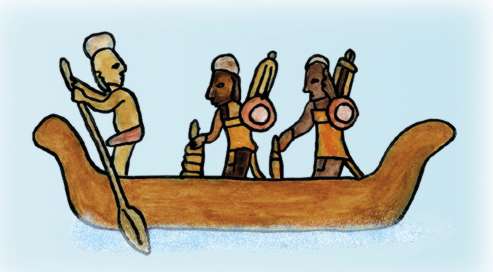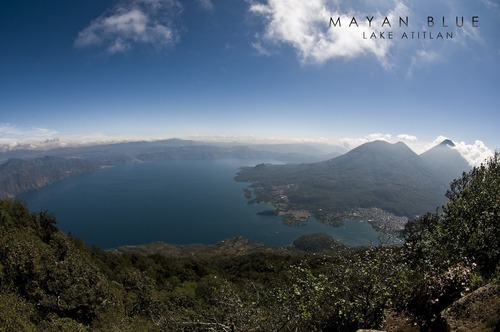Maya Trade with Cuba and Florida?
 In his research article “Yucatan Channel and Trade,” researcher Ronald Canter compiled the best available evidence of trade contacts between the Maya and people east of the Yucatan Channel such as Cuba and Florida. Read more below:
In his research article “Yucatan Channel and Trade,” researcher Ronald Canter compiled the best available evidence of trade contacts between the Maya and people east of the Yucatan Channel such as Cuba and Florida. Read more below:
YUCATAN CHANNEL and TRADE
Abstract:
This article summarizes some of the evidence for the passage of Maya trade items and ideas eastward, and examines factors affecting canoe navigation across both the Yucatan Channel and the Straits of Florida. The recent tracing of jade artifacts in Antigua to parent mines in Guatemala indicates that there was past trade across the Yucatan Channel. Additional references document trade between Cuba and Florida.The Yucatan Channel separates Yucatan from the western tip of Cuba. From Punta Sur on Isla de Mujeres to Cabo San Antonio is 194 km, a daunting crossing made worse by the Yucatan Current surging between capes…Nonetheless, a small but steadily accumulating body of evidence suggests direct, though sporadic, trade between the Maya in Yucatan and the Taino in Cuba. There is evidence of indirect trade of Maya articles east through the Taino cultural area, even as far as Antigua. The small amount of evidence suggests sporadic and infrequent contact, rather than sustained.
Some cultural and trade goods occasionally did cross the channel, whether in Maya or Taino canoes is uncertain. A large cake of beeswax, found in easternmost Cuba on Columbus’s first voyage, would have come from Yucatan, the only logical source (Columbus, 1493, pg 161). The common honeybee was unknown in the Americas before contact. Only the stingless bees Meliponini beecheii and M. Yucatanica were suitable for honey production, and the Maya were virtually the only beekeepers. Bartolome de Las Casa, in comments on Columbus’s “Journal of the First Voyage”, noted that the people of Cuba did not keep bees or produce beeswax themselves. Las Casas speculated that the wax had come from a wrecked Maya trading canoe. Given the currents, this seems unlikely, but not impossible.
More significant is Pendergast’s find of a Taino vomit ladle in a grave at the Classic Period site of Altun Ha, Belize. Even if it could float, it could not have drifted across the Yucatan Channel. Anything caught in the Yucatan Current is bound for Florida or beyond. The ladle would have come via canoe (Graham, 2002).
Dicey Taylor and Chris Jones have investigated Taino ball courts. The Mesoamerican ball game seems to have leapt the Yucatan Channel in the Classic and quickly spread eastward from island to island. At La Aleta in the Domincan Republic there is monumental architecture, a ball court, and a cenote containing sacrifices (Beeker, 1999). On Puerto Rico, Dr. Jones found parallel-walled courts near Utuado and at Tibes, 10 courts at each site. All were more recent than 650 AD, and were called “batay”, “a word that seems to appear in Classic Maya inscriptions in reference to ball playing” (Jones, Taylor, 2001).
Most remarkable is the recent tracing by mineralogist George Harlow of Preclassic jadeite “axes” found on the Island of Antigua back to their parent mines – in Guatemala. Antigua is nearly 3000 km east of the Motagua valley as the crow flies, and 3500 km island hopping via Cuba, Hispanola, etc. Rocks don’t float. Only by canoe could they have made their way across the entire Caribbean (Petit, 2006).
A unique and valuable trade item tends to become more valuable as it is traded farther from the source. The incentive is to profit by continuing to trade it until one of three things happens: an owner can’t bear to part with it, it reaches a cultural area where it is not valued, or it reaches the bitter end of the trade route. For the jadeite axes found on Antigua, the second and third may have both applied. Antigua was the far eastern edge of the Taino cultural area and of the Caribbean island chain….
Cornell University’s ornithology site on the Ivory-billed Woodpecker references the Precolumbian Florida-Cuba trade. “Early explorers noted a considerable trade in live birds between peoples of Cuba and peninsular Florida. Native Americans placed great value on these (Ivory-billed) woodpeckers.” Jackson speculated that the Ivory-billed Woodpecker might have entered Cuba through this trade (Jackson, 2004).
Several Timucuan words are Taino loan words. Not being a linguist, I will just quote. The source is Julian Granberry, A Grammar and Dictionary of the Timucua Language, The University of Alabama Press, 1993. The specific words are hinino (from Taino hynino ‘tobacco’) and casino (Ilex vomitoria). It has that three-syllable shape that Taino words tend to have. There is another Timucua term for Ilex, ipopi, which derives from the native term ipo ‘to charm or bewitch, to take medicine’. Ilex was the basis of the quintessential ceremonial beverage in the Southeast, the “black drink,” (still) used as a purgative to cleanse the body before ceremonies.
It is also the secret ingredient in Coca Cola, which started out in Georgia as a medicinal and then became a refreshment, like Smilax (zarza parilla), used as a medicinal (for venereal disease) in the 16th century and which later became the “sasparilla” famously drunk by wimps in Western movies” (Hopkins, 2006).
In the 18th century, at Talahasochte, far up the Suwanee River in northern Florida, William Bartram witnessed the return of an 850 km trade voyage by canoe from Cuba (1700 km round trip), and heard of others to the Bahamas. Their cypress canoes could hold 20 to 30 warriors. The route mostly hugged the sheltered west coast of Florida but ended with the most dangerous and difficult part – a 150 km crossing of the choppy Florida Straits, swept by the powerful current of the Gulf Stream. The trip is less challenging than one from Yucatan to Cuba but still serious. The crossing does have the advantage of large “targets” on either side of the straits: the line of the Florida Keys to the north and the coast of Cuba to the south. Paddlers would still have to angle westward to avoid being swept far to the east while crossing.
In April of 2006 a 15 m dugout canoe was found in the Apalachicola River, in northern Florida. The canoe is not ancient (only about 200 years old) but the design is (Ensley, 2006). It is a pitpan, distinguished by projecting platform ends used as stances for poling. Except for size, its design is identical to ones used from the Preclassic to the present on both Caribbean and Central American waters. Of 55 Archaic canoes examined from Newnans Lake, Florida, four showed similarities to the pitpan design, though not fully developed.
Read the full article here: http://research.famsi.org/aztlan/uploads/papers/Canter-Yucatan-Channel-and-Trade.pdf


